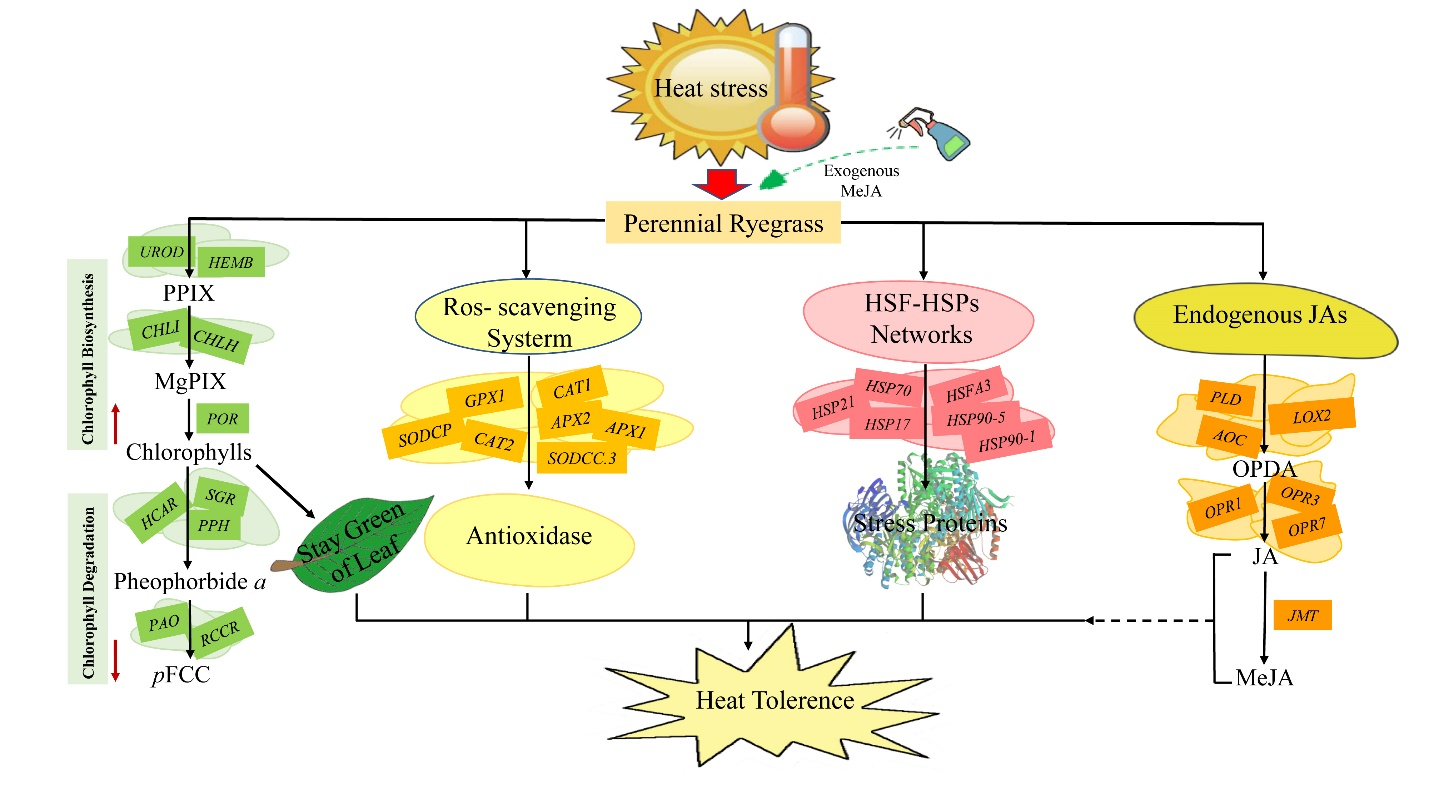Transcriptome characterization of candidate genes for heat tolerance in perennial ryegrass after exogenous methyl Jasmonate application
2022年05月26日 16:31
DOI:10.1186/s12870-021-03412-9
发表期刊:BMC Plant Biology
链接:https://link.springer.com/article/10.1186/s12870-021-03412-9
作者:Gang Nie, Jie Zhou, Yiwei Jiang, Jie He, Yang Wang, Zongchao Liao, Charlotte Appiah, Dandan Li, Guangyan Feng, Linkai Huang, Xia Wang and Xinquan Zhang.
摘要:
Methyl jasmonate (MeJA) plays a role in improving plant stress tolerance. The molecular mechanisms associated with heat tolerance mediated by MeJA are not fully understood in perennial grass species. The study was designed to explore transcriptomic mechanisms underlying heat tolerance by exogenous MeJA in perennial ryegrass (Lolium perenneL.) using RNA-seq. Transcriptomic profling was performed on plants under normal temperature (CK), high temperature for 12h (H), MeJA pretreatment (T), MeJA pretreatment + H (T-H), respectively. The analysis of diferentially expressed genes (DEGs) showed that H resulted in the most DEGs and T had the least, compared with CK. Among them, the DEGs related to the response to oxygen-containing compound was higher in CKvsH, while many genes related to photosynthetic system were down-regulated. The DEGs related to plastid components was higher in CKvsT. GO and KEGG analysis showed that exogenous application of MeJA enriched photosynthesis related pathways under heat stress. Exogenous MeJA signifcantly increased the expression of genes involved in chlorophyll (Chl) biosynthesis and antioxidant metabolism, and decreased the expression of Chl degradation genes, as well as the expression of heat shock transcription factor - heat shock protein (HSF-HSP) network under heat stress. The results indicated that exogenous application of MeJA improved the heat tolerance of perennial ryegrass by mediating expression of genes in diferent pathways, such as Chl biosynthesis and degradation, antioxidant enzyme system, HSF-HSP network and JAs biosynthesis.

MeJA participates in the response ofperennial ryegrassto heat stress. The red arrow with upward direction represented the positive correlations; the red arrow with downward direction represented the negative correlations; the black dotted line indicated that the direct correlation was uncertain.